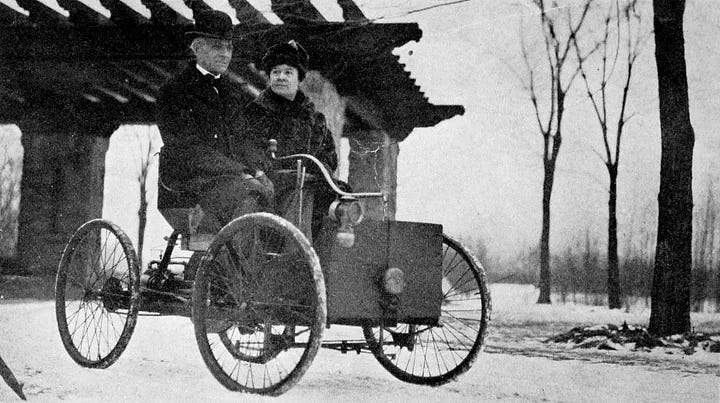It’s funny how complete untruths can be transformed into the kind of certainties that become the foundation for an entire generation’s faith in the state. Here, Larry Schweikart and Burton Folsom happily demolish one of the most pervasive of these certainties:
“…the makers of autos, tires and headlights began building roads privately long before any state or the federal government got involved. The Lincoln Highway, the first transcontinental highway for cars, pieced together from new and existing roads in 1913, was conceived and partly built by entrepreneurs — Henry Joy of Packard Motor Car Co., Frank Seiberling of Goodyear and Carl Fisher, a maker of headlights and founder of the Indy 500.” Railroads are another example of the infrastructure-follows-entrepreneurship rule. Before the 1860s, almost all railroads were privately financed and built. One exception was in Michigan, where the state tried to build two railroads but lost money doing so, and thus happily sold both to private owners in 1846. When the federal government decided to do infrastructure in the 1860s, and build the transcontinental railroads (or “intercontinental railroad,” as Mr. Obama called it in 2011), the laying of track followed the huge and successful private investments in railroads.
“In fact, when the government built the transcontinentals, they were politically corrupt and often — especially in the case of the Union Pacific and the Northern Pacific — went broke. One cause of the failure: Track was laid ahead of settlements. Mr. Obama wants to do something similar with high-speed rail. The Great Northern Railroad, privately built by Canadian immigrant James J. Hill, was the only transcontinental to be consistently profitable. It was also the only transcontinental to receive no federal aid. In railroads, then, infrastructure not only followed the major capital investment, it was done better privately than by government.”
Read the rest here.
Originally published on On the Banks





As with so much else, the question of "how will X get done?" is confused, maybe deliberately, with a different question, "how will X be paid for?" I couldn't read the rest of the linked article because I didn't want to pay for access, so maybe the authors addressed that. In most cases, I think, the roads get built by a bunch of private firms, the same way that parking lots for shopping centers or stadiums get built. If the critic wanted to raise a more persuasive objection, it would be, "how are the roads going to be maintained? How many subscriptions?"
So much for’ you didn’t build it’ parroticians. Great article.